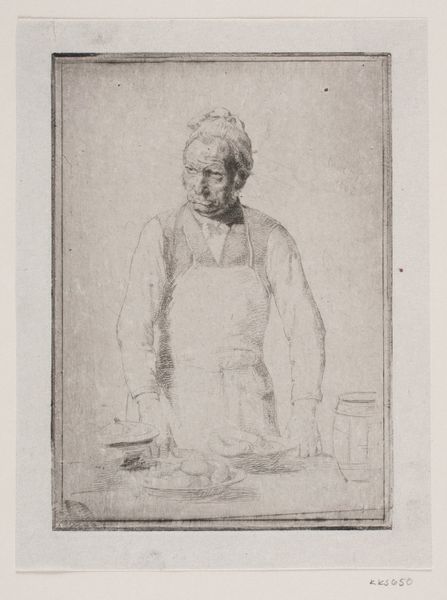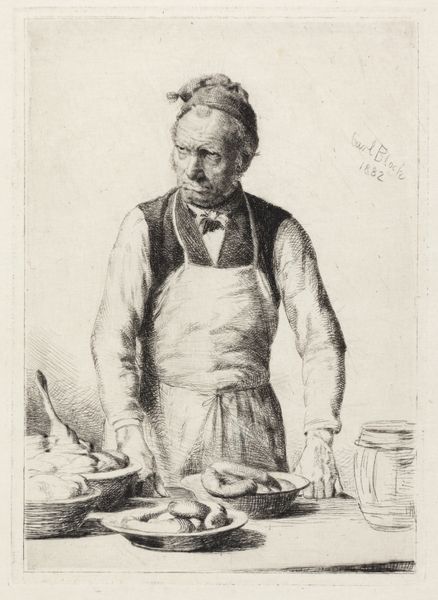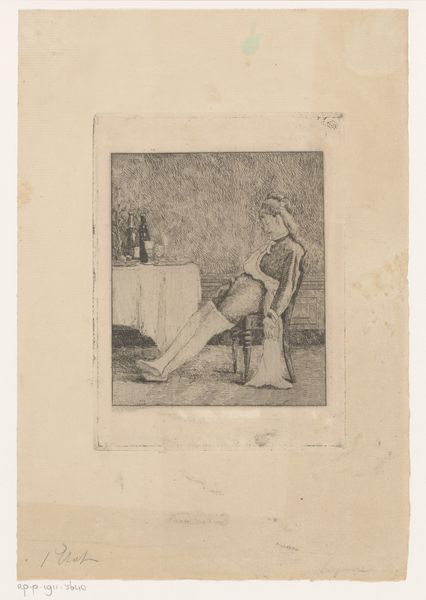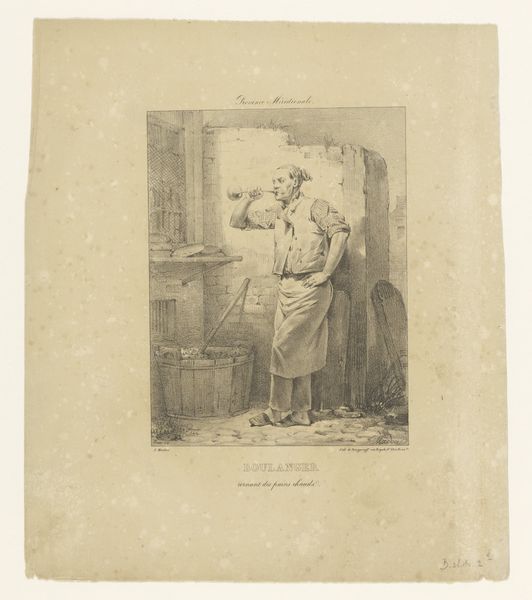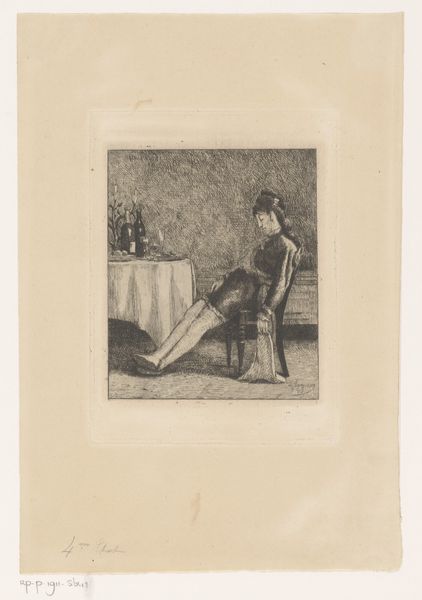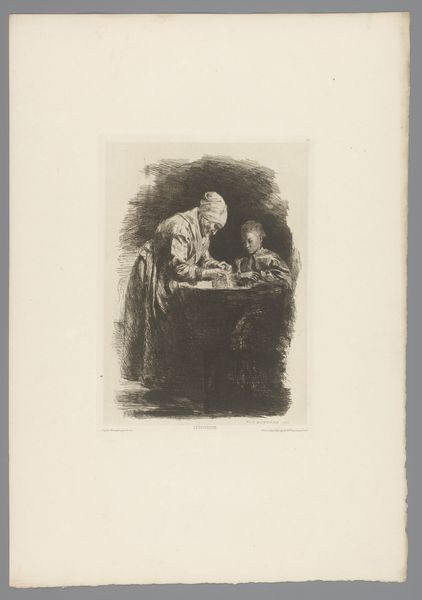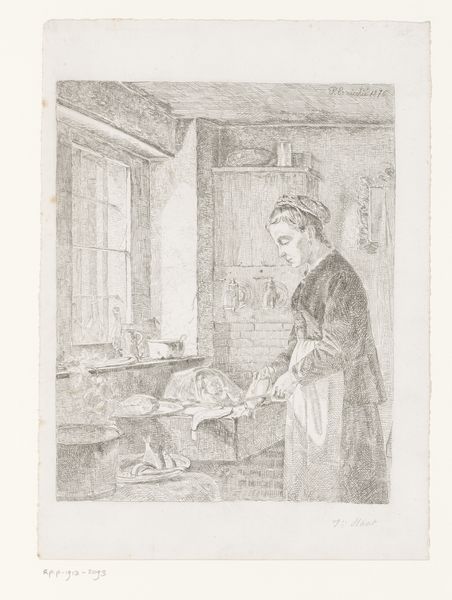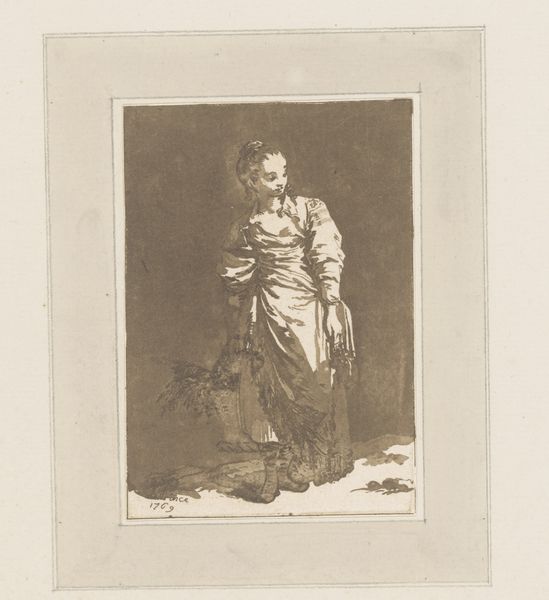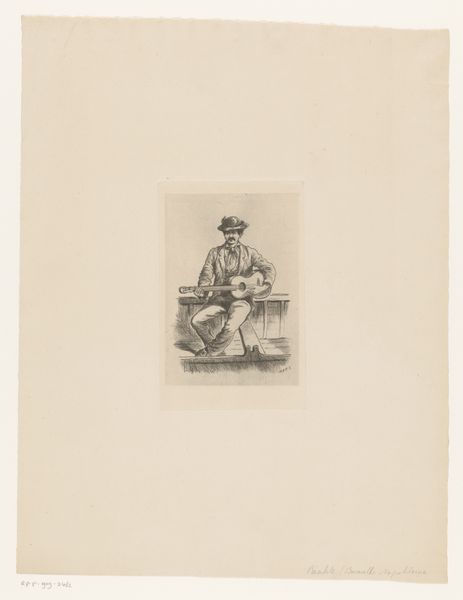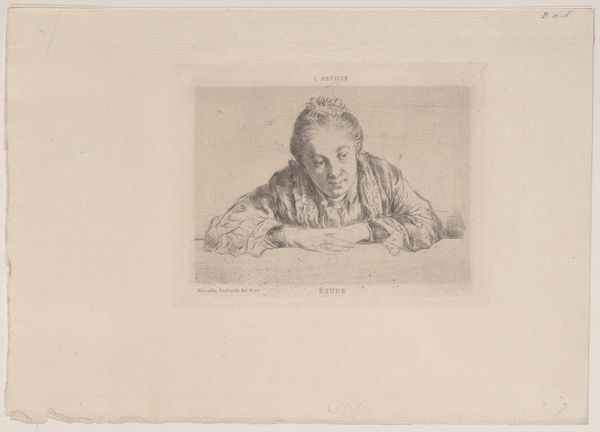
drawing, pencil
#
portrait
#
pencil drawn
#
drawing
#
light pencil work
#
pencil sketch
#
old engraving style
#
pencil drawing
#
pencil
#
genre-painting
#
academic-art
#
realism
Dimensions: height 140 mm, width 100 mm
Copyright: Rijks Museum: Open Domain
Carl Bloch created this image, Worstmaker, using etching, in 1882. The composition immediately draws your eye to the figure's direct gaze. This, combined with the symmetry in the apron and waistcoat, gives him a sense of balance. A muted palette creates an intimate atmosphere, drawing us into the ordinariness of this man's world. Note how the cross-hatching of the etching technique defines form and texture, from the soft cap to the smooth plates. The use of hatching also adds depth, creating shadows that sculpt the figure. The perspective, with the table cutting across the foreground, gives the composition a dynamic tension, as if we are part of the scene. In semiotic terms, the image is a signifier of everyday life. The uniform signifies labor, the food on the table domesticity. These signs work together to evoke a sense of the individual's place in a larger societal framework. The careful attention to form invites us to contemplate the meaning of work, value, and representation. These interpretations can shift over time, reflecting changing societal values.
Comments
No comments
Be the first to comment and join the conversation on the ultimate creative platform.
